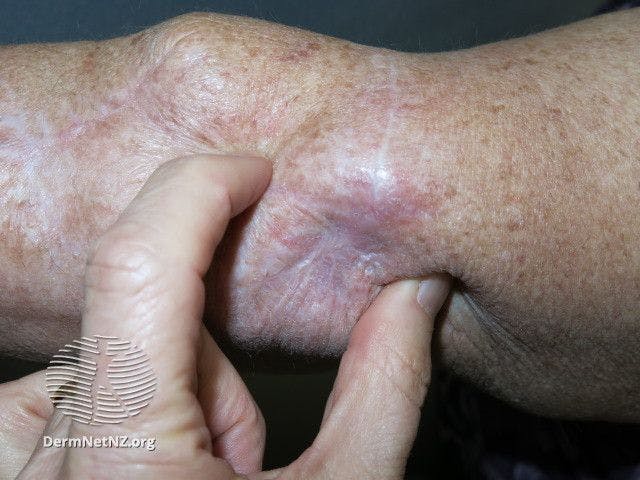- Acne
- Actinic Keratosis
- Aesthetics
- Alopecia
- Atopic Dermatitis
- Buy-and-Bill
- COVID-19
- Case-Based Roundtable
- Chronic Hand Eczema
- Chronic Spontaneous Urticaria
- Drug Watch
- Eczema
- General Dermatology
- Hidradenitis Suppurativa
- Melasma
- NP and PA
- Pediatric Dermatology
- Pigmentary Disorders
- Practice Management
- Precision Medicine and Biologics
- Prurigo Nodularis
- Psoriasis
- Psoriatic Arthritis
- Rare Disease
- Rosacea
- Skin Cancer
- Vitiligo
- Wound Care
News
Article
Dermatology Times
American Indian/Alaska Native Communities Face Barriers to Dermatologic Care, Disparities, and More
Author(s):
November is Native American Heritage Month. Access to dermatological health care has been a persistent challenge for individuals in the AIAN community.
scoutori/Adobe Stock

Access to medical care, including dermatological health care, has been a persistent challenge for individuals within the American Indian/Alaska Native (AIAN) communities. “Despite increasing evidence of health status inequities affecting Indigenous populations, health services often fail to address health and social inequities as routine aspects of health care delivery,” according to authors of a 2016 ethnographic study.1
Globally, measures of health and well-being of the AIAN community fall significantly behind those of the general population, and life expectancies of AIAN individuals are projected to be dramatically lower than average.1 These challenges are compounded by discriminatory and stigmatizing experiences faced by AIAN individuals worldwide.
“Research confirms that Indigenous peoples experience individual and systemic discrimination when seeking health care, despite efforts within the health care sector to promote cultural sensitivity and cultural safety,” according to Browne et al.1 “Health services, however, are not typically designed to take into account the experiences of Indigenous peoples. For example, despite extensive evidence linking trauma and violence to multiple health problems, including chronic pain, depression, anxiety, and substance use, these dynamics are rarely considered in the design and delivery of health care for Indigenous peoples.”
Lucinda Kohn, MD, MHS, is an assistant professor of dermatology at the University of Colorado specializing in pediatric dermatology and is fellowship trained. Kohn’s clinic is at the Children’s Hospital of Colorado, and she works as the only dermatologist at Chinle Comprehensive Health Care Facility, an Indian Health Service facility in Chinle, Arizona, in the heart of the Navajo Nation.
Kohn, whose husband is a member of the Crow tribe, has made it her mission to bridge the gap in dermatologic care, with a particular focus on American Indian populations. She is also the principal investigator in the University of Colorado’s Native Skin Health project, which seeks to expand data and research into dermatologic conditions and disparities faced by American Indian communities, which is often scarcely reported. The project directly surveys members of American Indian communities.
“American Indians represent around 2.9% of the entire US population,” Kohn said. “They’re underrepresented in large health care databases and insurance claims databases due to factors like poverty and high unemployment rates on reservations.”
Common Cutaneous Diseases
In Canada, it is estimated that the 1-year prevalence of atopic dermatitis (AD) in children living on a First Nations reserve may be as high as 16.5%, and most cases are classified as moderate to severe.2 Additionally, research suggest that other common cutaneous conditions among members of AIAN communities include impetigo, skin infections, diabetic skin complications and ulcers, infestations, pediculosis capitis, psoriasis, and scabies, all of which are seen in significantly high rates, with some patients experiencing multiple conditions at once.2
The Native Skin Health project’s research has found that among adolescents, the top concerns included acne, scarring, and eczema. In contrast, adults commonly experience dry skin, hair loss, and acne.
Environmental factors such as clean water concerns, access to and cost of skin care regimens and products, crowded living conditions, and poverty all exacerbate skin conditions such as AD, researchers noted.2
Lacking Prevention Efforts
Furthermore, skin cancer prevention efforts aimed at AIAN individuals are lacking, according to the American Academy of Dermatology (AAD).3 Results of a 2022 study published in the Journal of the American Academy of Dermatology found that although there are more than 9 million AIAN in the United States, research and prevention efforts related to skin cancer in this population are scarce.4 To date, this is the largest study to explore skin cancer education, prevention, and research efforts in this patient population.3
“When you look at the lack of sun protection and use of tanning beds, it’s not surprising to see that American Indians/Alaskan Natives are reporting more severe sun damage to their skin, such as sunburns, when spending over an hour in the sun as compared to non-White respondents,” study coauthor Vinod E. Nambudiri, MD, MBA, FAAD, said in a news release from the AAD.3
“While some people may be most concerned about the freckles, age spots, and wrinkles that develop on their skin from UV exposure, it’s the increasing risk of skin cancer, including melanoma, the deadliest form of skin cancer, which is the most alarming,” Nambudiri said.
Barriers to Accessible Care
According to an examination of data from the 2020 US Census, just 56 dermatologists and 3 dermatology physician assistants are located in the 100 most populous AIAN homelands, “yielding a mean dermatology provider density of 1.24 per 100,000 individuals.”5 For a population that experiences increased acne scarring and mortality associated with melanoma,5 these numbers are alarming.
Geographical isolation is another significant barrier to accessing dermatological care. Many reservations are located in rural areas, far from urban centers where dermatologists are concentrated. Kohn said, “To see a dermatologist, you can’t see one in your community; you have to go to the nearest metropolitan area. That can be a 3-and-a-half-hour drive or more.” Challenges posed by unpaved or muddy roads during inclement weather further compound the difficulty of accessing care.
Food deserts are another pressing issue, with limited access to fresh produce and healthy food options in many Indigenous communities, Kohn said. She emphasized that this can lead to dietary choices that could exacerbate skin conditions. Furthermore, low health literacy is prevalent, making it challenging for patients to understand and follow medical advice, she noted.
With decreased accessibility to dermatologic care and other factors such as cultural differences, disproportionate poverty, lack of transportation, and inadequate health literacy, researchers say there are many factors contributing to poor skin health outcomes in this patient population.5
Results of another study found that access to dermatologic care and telehealth programs was hindered by rural living. The researchers found that, on average, in rural communities populated predominantly by AIAN individuals, the nearest dermatology clinic from rural communities lived in predominantly by American Indian individuals was 68 miles away.6 Of the 303 tribal facilities and rural Indian Health Services in the continental US, only 27 (9%) had access to a teledermatology program.6
Kohn pointed out that the absence of electricity in some areas also can hinder access to telehealth services. Many patients on Indian reservations lack home internet, so “Providers take pictures and send them to me, so I can review the cases that way,” she said.
Conscientious Care and Cultural Considerations
Kohn stressed the importance of building genuine partnerships, respecting tribal sovereignty, and avoiding tokenization. To ensure equitable care, providers must truly get to know the communities served and tailor care to their specific needs and challenges, she said.
“There have been a few high-profile cases where tribal communities were not respected in the research process. They were not in dermatology. But these are things I think about whenever I do research with tribes,” she said.
Representation, remembrance, and inclusion are paramount to health equity, Kohn emphasized. Researchers and health care providers must be cognizant of the fact that in working with AIAN communities and individuals, they are directly working with sovereign groups that have their own norms, including political structures, rules, and regulations, she said.
“Having a little bit more openness toward this population is key,” she said. “When I write about the Native population, I try to write in a way that only benefits the tribe. Sometimes I am very specific with my words because I don’t want to propagate a stigma or create more harm.”
In her personal experiences in publishing her research, Kohn has found that some reviewers may not thoroughly understand the historical trauma of American Indian populations.
“Be cognizant that it’s a different culture. Most tribes have a different language, different culture; family structures might be different. Priorities will be different, too. They may not align with your priorities. Maybe your priority as a dermatologist is to fix the skin, and then the patient’s priority is to spend time with family or approach treatment in a way that is in line with their culture,” Kohn said. “Cultural sensitivity is really important.”
References
- Browne AJ, Varcoe C, Lavoie J, et al. Enhancing health care equity with Indigenous populations: evidence-based strategies from an ethnographic study. BMC Health Serv Res. 2016;16(1):544. doi:10.1186/s12913-016-1707-9
- Asiniwasis RN, Heck E, Amir Ali A, Ogunyemi B, Hardin J. Atopic dermatitis and skin infections are a poorly documented crisis in Canada’s indigenous pediatric population: it’s time to start the conversation. Ped Dermatol. 2021;38(suppl 2):188-189. doi:10.1111/pde.14759
- Largest study of skin cancer prevention in American Indians and Alaskan natives shows UV protection lacking. American Academy of Dermatology. August 16, 2022. Accessed September 21, 2023. https://www.aad.org/news/uv-protection-lacing-for-american-indians-alaskan-natives.
- Yang K, Pan CX, Kassamali B, Zhou G, LaChance AH, Nambudiri VE. Sun-protective behaviors and skin cancer risk factors among American Indians and Alaskan Natives in the United States. J Am Acad Dermatol. 2022;88(2):488-490. doi:10.1016/j.jaad.2022.06.035
- Nguyen B, Bray FN. Access to dermatologic care in Indigenous American communities. J Am Acad Dermatol. 2022;87(4):904-906. doi:10.1016/j.jaad.2022.04.026
- Morenz AM, Wescott S, Mostaghimi A, Sequist TD, Tobey M. Evaluation of barriers to telehealth programs and dermatological care for American Indian individuals in rural communities. JAMA Dermatol. 2019;155(8):899-905. doi:10.1001/jamadermatol.2019.0872

Newsletter
Like what you’re reading? Subscribe to Dermatology Times for weekly updates on therapies, innovations, and real-world practice tips.


























